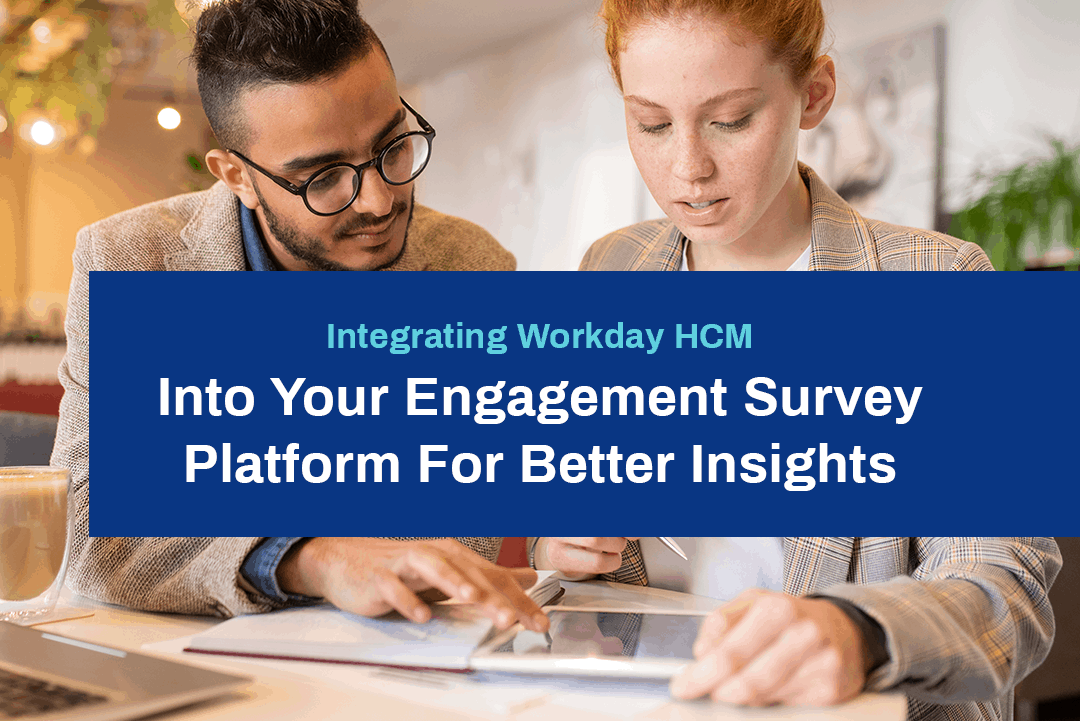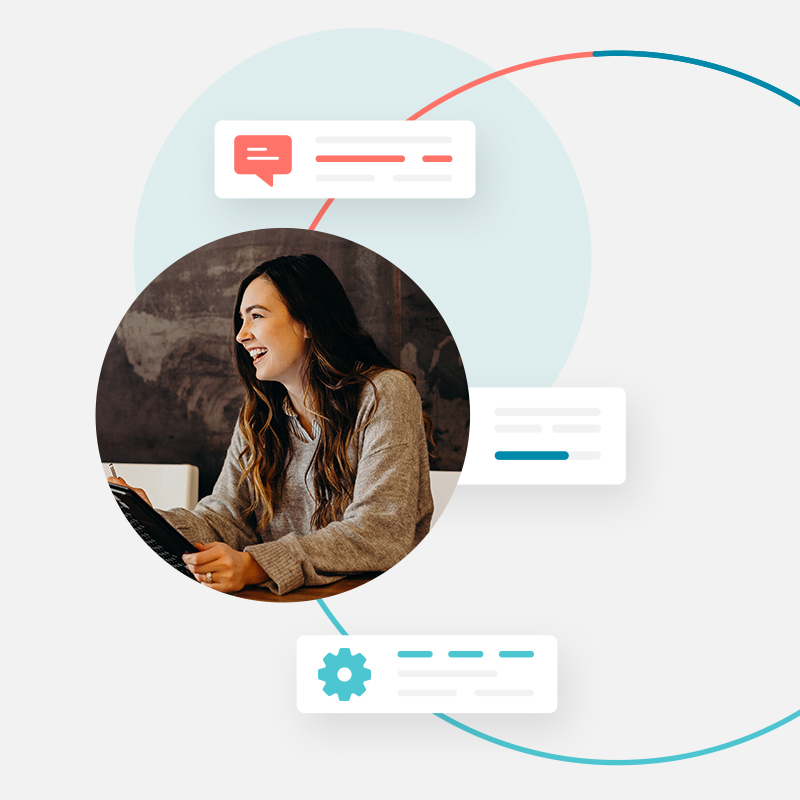HR leaders are already well-versed in the benefits human capital management (HCM) software provides an organization. However, integrating an employee engagement and survey platform into HCM software yields an even greater value for HR, streamlining an employee feedback strategy with speed, efficiency, and convenience.
Although there are numerous HCM solutions in the marketplace, a handful dominate the space. Workday is the second-largest HCM provider in market share but fastest-growing in year-over-year growth. Using Betterworks Engage in conjunction with Workday gives HR a powerful and robust feedback solution, allowing them to use surveys more frequently without slowing workflow or adding time-consuming tasks to HR’s already full plate. Our focus on the benefits of integrating Workday HCM data into employee engagement surveys revolves around the following points:
- Centralized employee data in Workday
- Challenges in integrating employee engagement surveys
- More insightful employee engagement surveys with Workday for precise segment targeting, improved accuracy, and better action planning
Centralized Employee Data in Workday HCM
One of the key benefits of Workday – and most HCM solutions – is how it centralizes all employee data into a single location. Rather than having splintered data spread across different servers, departments, and even cities, the cloud-based storage makes all information available at all times and from any location. Automated updates also mean the employee data is always timely and relevant.
That centralized worker data serves the spectrum of the employee journey, from recruits to retirees and everyone in between. Furthermore, Workday also provides vital dimensional employee data that plays an essential role in a survey system, including:
- Demographics
- Departmental information
- Office locations
- Tenure
- Remote workers
- Salary
This combination of convenience and scope of employee information makes an HCM solution like Workday an ideal anchor point for a survey system that relies on fast access to accurate employee data.
Challenges in Integrating Employee Engagement Surveys
The steps HR takes during the implementation phase of survey software are important to the ultimate effectiveness of the feedback program and overall employee engagement strategy. A disorganized or haphazard approach to implementation, particularly regarding employee data, can present many challenges that an organization could avoid by coupling the survey software with a comprehensive HCM solution. Further, between changes to employee data – new hires, promotions, exits, and others – and a generally dynamic workplace and workforce, data reliability can be an ongoing challenge without the proper systems in place.
Data reliability can be an ongoing challenge without the proper systems in place.
Inadequate Data
Inadequate access to employee data is the root of many of the challenges we see in integrating HCM data into employee feedback and survey platforms. Without that critical access, HR is unable to segment the workforce as precisely as they might want, limiting the depth and reach of the feedback. Consequently, the survey results are also either limited or inaccurate and unreliable, inhibiting the actionable insights that decision-makers rely on, to steer the organization and affect positive change.
Data Transfer
Many organizations still use annual surveys as their primary source of employee feedback. The preparation for each of those surveys usually requires significant time and resources from both HR and their chosen vendor, where HR provides the vendor with a spreadsheet that contains all of the employee data used in the survey. Rather than integrated systems that consistently communicate with each other, this manual approach can prove to be inefficient and costly. This is especially true for larger organizations where more effort and time is required to provide the necessary data to the survey vendor.
Manually moving the data from HR to the survey provider can also create latency issues, since the data represents a single snapshot in time at the moment HR extracted the information from their database. Given the dynamic nature of most organizations, employee turnover and transfers occurring between the point of data extraction and survey distribution can create inaccuracies that limit the effectiveness of the feedback and resulting analytics. These inaccuracies can skew the survey results and, once again, limit the insights that managers need to make decisions.
More Insightful Engagement Survey Results With Workday
Choosing the right engagement survey software is a crucial first step in eliminating those challenges that limit the effectiveness of a feedback strategy. For instance, using a survey software that integrates employee data from an HCM extends the benefits of the survey system itself, efficiently encompassing every employee datapoint needed for effective survey delivery and analysis. By pairing Workday’s data with an advanced feedback system, like Betterworks Engage , HR gains several advantages, including:
Integration
Instead of manually transferring employee data from HR servers to the survey platform, the feedback software should allow for the seamless transfer of data from the HCM to the feedback platform on a frequent basis. This efficiency saves HR significant time, money, and resources. Likewise, when reporting on results, HR doesn’t have to manually splice the information by teams, managers, departments, or any other employee segment since the software should automate the feedback data by these segments.
Accuracy
Employee data is continually updated in Workday, meaning the platform is always providing the survey software with the most accurate and up-to-date worker data. More accurate data allows HR to segment the worker base into specific groups — tenure, department, demographics, position, and several others — without skewed results from turnover or organizational movement. Ultimately, that improved accuracy yields deeper insights and more relevant results, empowering an organization to make better, fully-informed decisions.
The Employee Experience
From onboarding to exit polls, feedback informs HR of an employer’s strengths and weaknesses so they can continuously improve the employee experience. Since Workday houses all employee-related data, including information on recruits and ex-employees, an integrated survey system lets HR efficiently use feedback at every stage of employment, starting at onboarding and continuing through to the exit stage. Likewise, as workers progress from one stage to another, HR can easily trigger additional surveys to maintain an accurate pulse on that worker’s engagement level.
Survey Frequency
Using traditional, outdated survey solutions that cannot integrate data from an HCM limits the number of surveys HR can distribute. This limitation primarily stems from the time and costs involved in manually updating employee data.
However, an integrated survey software removes those constraints, allowing HR to use additional surveys and polls throughout the year without overwhelming the department with work. More frequent feedback improves the immediacy and relevance of the results, giving managers and decision-makers a more accurate pulse on their employees and the ability to send further surveys on trouble areas.
Betterworks Engage’s ability to integrate Workday employee data allows HR to address employee survey challenges with far improved speed, precision, and actionable data. An employee engagement strategy that integrates a robust feedback solution with an HCM system can be more cost-efficient, accurate, and insightful for an organization. Although employee engagement is on the rise, nearly two-thirds of the workforce are still not engaged, making the combination of Betterworks Engage and Workday a distinct competitive advantage.









